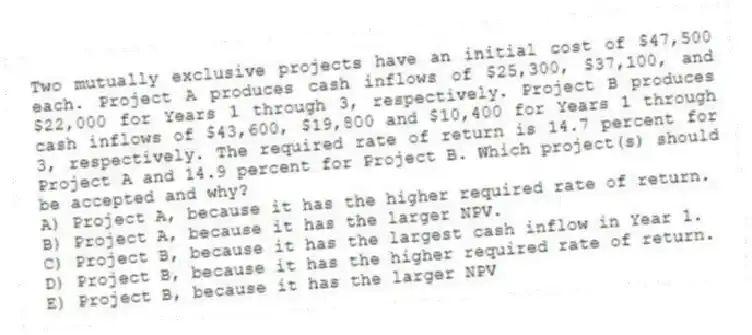
Two mutually exclusive projects have an initial cost of $47,500 each. Project A produces cash inflows of $25,300, $37,100, and $22,000 for Years 1 through 3, respectively. Project B produces cash inflows of $43,600, $19,800 and $10,400 for Years 1 through 3, respectively. The required rate of return is 14.7 percent for Project A and 14.9 percent for Project B. Which project(s) should be accepted and why?
A) Project A, because it has the higher required rate of return.
B) Project A, because it has the larger NPV.
C) Project B, because it has the largest cash inflow in Year 1.
D) Project B, because it has the higher required rate of return.
E) Project B, because it has the larger NPV
Correct Answer:
Verified
Q37: Graphing the crossover point helps explain:
A) why
Q38: Which one of the following statements related
Q39: Tedder Mining has analyzed a proposed expansion
Q40: Which one of the following is a
Q41: When the present value of the cash
Q43: In actual practice, managers most frequently use
Q44: You are considering a project with conventional
Q45: Which one of the following methods of
Q46: The profitability index is most closely related
Q47: The final decision on which one of
Unlock this Answer For Free Now!
View this answer and more for free by performing one of the following actions

Scan the QR code to install the App and get 2 free unlocks

Unlock quizzes for free by uploading documents